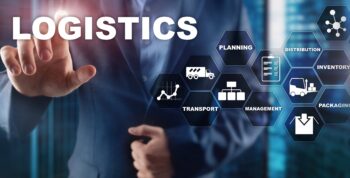We are noticing an increasing level of excitement about the possible applications of artificial intelligence (AI) in supply chain, along with some scepticism and lack of enthusiasm from the traditionalists. AI definitely has the potential to enrich our everyday business activities, but how far have we got? Some global organizations are trying out various solutions but the results have been generally disappointing so far.
So what is AI in the supply chain?
AI is intelligence exhibited by machines, or when machines mimic or can replace intelligent human behaviour, such as problem-solving or learning.
It can be applied in two ways:
- Automating processes and actions so they can operate without the need for human intervention
- Assisting the human decision-making process in day-to-day operations by reducing errors and identifying bias, especially in data analysis
AI applications in logistics
Warehouse logistics and transport operations generate huge volumes of data. To gain full benefit from this data we need to apply analytic tools to gain better insights. Machine learning techniques can be used to streamline and automate processes such as load forecasting and vehicle scheduling. New AI software includes functionality that teaches computers how to provide real-time information from the raw data, on which key decisions then are based. Advanced applications such as autonomous vehicles are being tested, but with mixed results. DHL says that its use of autonomous forklifts is “reaching a level of maturity” in warehouse operations.
Benefits of AI
According to BI Intelligence, Business Insider’s premium research service, AI and machine learning (ML) can deliver enormous benefits to supply chain and logistics operations. These include cost savings through reduced redundancies and risk mitigation, improved forecasting, faster deliveries through more optimized routes and improved customer service. However, they concede that AI has yet to achieve widespread adoption.
Reducing wasted admin time
Businesses spend hundreds of hours per week doing manual, paper-based processes and checking discrepancies and errors as well as chasing suppliers. Many of these activities can be automated. Technology vendors such as IBM, Google, and Amazon have released products that utilize artificial intelligence such as “virtual assistant” AI bots such as Alexa and Siri.
Supply chain planning
ML can provide the best possible demand scenarios based on intelligent algorithms and machine-to-machine analysis of big data sets, using work tools that run in a continuous loop. This kind of capability could optimize the delivery of goods while balancing supply and demand, and wouldn’t require human analysis except for the setting of parameters.
Supplier management
Supplier risk is a huge concern for global organizations that have decentralised operations and AI can help. Data that is generated from supplier activity such as physical audits, supplier performance assessments and product failures provides an important basis for sourcing decisions. Supplier relationship management (SRM) is still mainly a human activity based on the use of available data, however stale or incomplete. Machine-to-machine automation can provide multiple ‘best supplier scenarios’ based on whatever parameters the user chooses.
Results to date have been somewhat disappointing
There is no consensus on why AI is not easily taking root in supply chain. It may be because:
- current systems are in conflict with other internal systems
- data being used is out-of-date, rising to poor decision making
- each step in the supply chain is too complex
- the technology is too expensive to own or run
There have been some successes, some notable ones in consumer applications. Coca-Cola is looking to follow the lead of the tech companies. AI will reside in vending machines, allowing greater personalization of your favourite soft drink.
Artificial intelligence success factors
“Without real-time information, an AI tool is just making bad decisions faster”, says Greg Brady, CEO of One Network Enterprises, a global provider of AI solutions. He has identified 8 things that AI needs to deliver value in the supply chain.
- Access to real-time data. Stale data results in poor decision-making.
- Access to external data. AI needs access to external and downstream data otherwise the results will be no better than that of a traditional system.
- Support for the end goal despite constraints – high consumer service levels at lowest possible cost.
- Decision making must consider change vs the cost of change. An AI tool must consider trade-offs in cost vs benefits when making decisions.
- Decision process must be continuous: self-learning and self-monitoring.
The AI system must be looking at the problem continuously and reset and fine tune as required. - AI engines must be autonomous decision-making engines
Significant value can only be achieved when the AI makes intelligent decisions and also executes them across trading partners. - AI engines must be highly scalable
The system must be able to process huge volumes of data very quickly. AI solutions must be able to make smart decisions, fast, and on a massive scale. - Must have a way for users to engage with the system
Users need visibility into decision criteria to enable them to understand issues that the AI system cannot solve. Users must be able to monitor and even override AI decisions when necessary.
AI challenges in supply chain
AI adoption faces many challenges. It requires major capital investments, updating of I.T systems and making organizational changes. As a result, only the largest players can afford this. Organizations with aged legacy systems face many other substantial obstacles to deploying and reaping the benefits of AI.
Despite its potential for adding value, there are already concerns that AI may replace routine and manual tasks resulting in job losses. Companies still need to develop strategies to address how workers’ roles will change as AI systems automate some manual functions. In addition, there are also security and safety concerns for IT infrastructure and human life.
What is attractive about AI-based solutions is that they learn and will drive continuous improvement over time. We just need to manage the human interface.
















